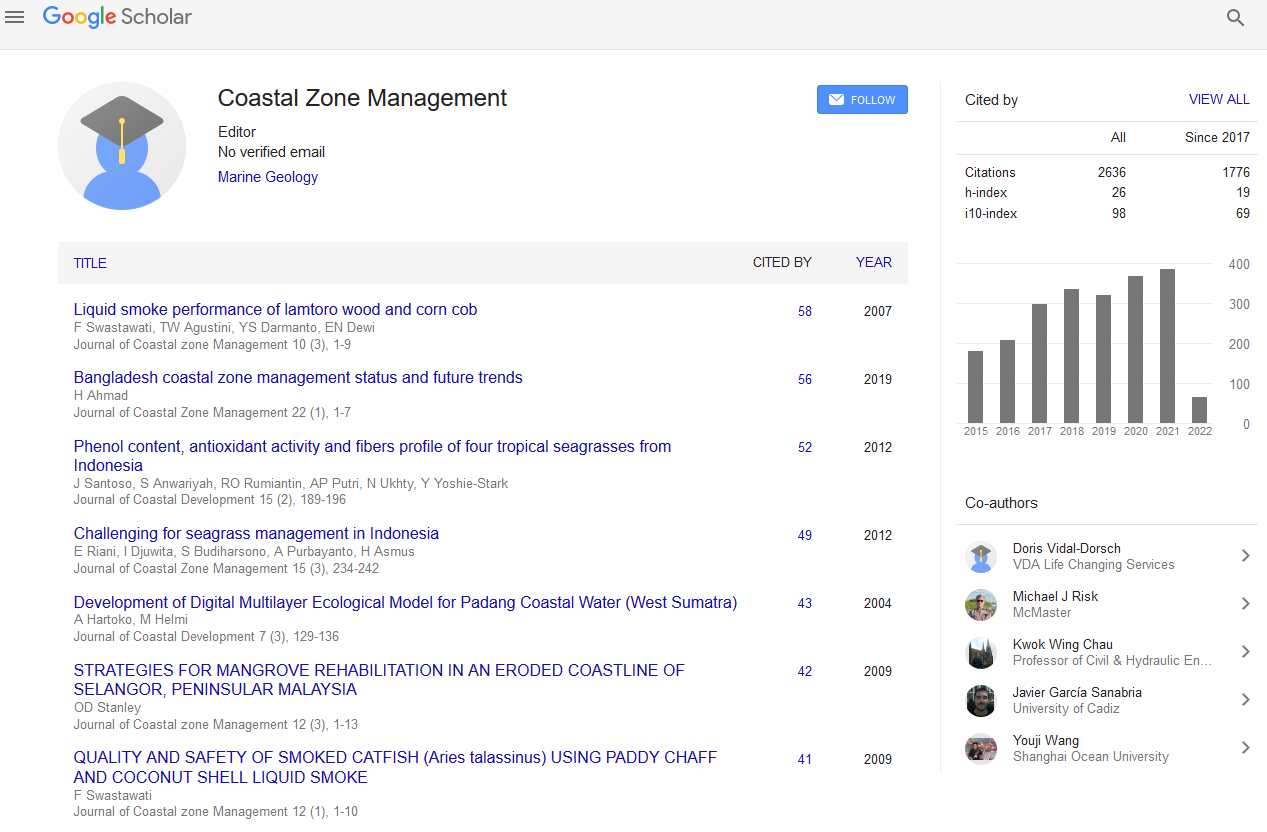Indexed In
- SafetyLit
- RefSeek
- Hamdard University
- EBSCO A-Z
- OCLC- WorldCat
- Publons
Useful Links
Share This Page
Journal Flyer

Open Access Journals
- Agri and Aquaculture
- Biochemistry
- Bioinformatics & Systems Biology
- Business & Management
- Chemistry
- Clinical Sciences
- Engineering
- Food & Nutrition
- General Science
- Genetics & Molecular Biology
- Immunology & Microbiology
- Medical Sciences
- Neuroscience & Psychology
- Nursing & Health Care
- Pharmaceutical Sciences
Abstract
Study of Physical and Chemical Parameters of Oustouan River, North Lebanon
Dunia Bouaoun and Rony Nabbout
The rivers of Lebanon have the peculiarity of having an environment of discharges of waste water from neighboring villages that line. Solid waste is also rejected in aquatic environment. The water flow varies considerably depending on the well defined seasons. Akkar region located in northern Lebanon is rich in agricultural land and waterways that should be monitored regularly to determine their physical and chemical and biological properties. This study is a need to detect contaminants of the Oustouan River and to push governments to better monitor streams and better protect them. We have studied the physical- chemical parameters of Oustouan River located at north Lebanon which is an area rich in agriculture, water represents a necessity for the people and for their activities. High levels of calcium (297.7 mg.L-1) were observed at stations located at station E6 in June. However, Magnesium concentrations were low in April (0.327 mg.L-1) and very high in all stations in August (4.23 mg.L-1). High levels of sulfates (253.2 mg.L-1) have been detected at station E6 in June. The high level of carbonates concentration at some stations has caused an important increase of the pH (from 7.8 to 8.5). Nitrate concentration 8.83mg.L-1 at the source increase to 13.96 mg.L-1 to the mouth of the river. The major problem of Oustouan River is the high concentrations of several minerals in particularly Chlorides and Sodium at E6. Heavy metals concentrations have been under the limit, in accordance with the method of detection by Atomic Absorption Spectrophotometer. This study should be repeated periodically to follow the water quality in the Oustouan River spacially at E6 sampling point and to define the possibilities of using its waters.

